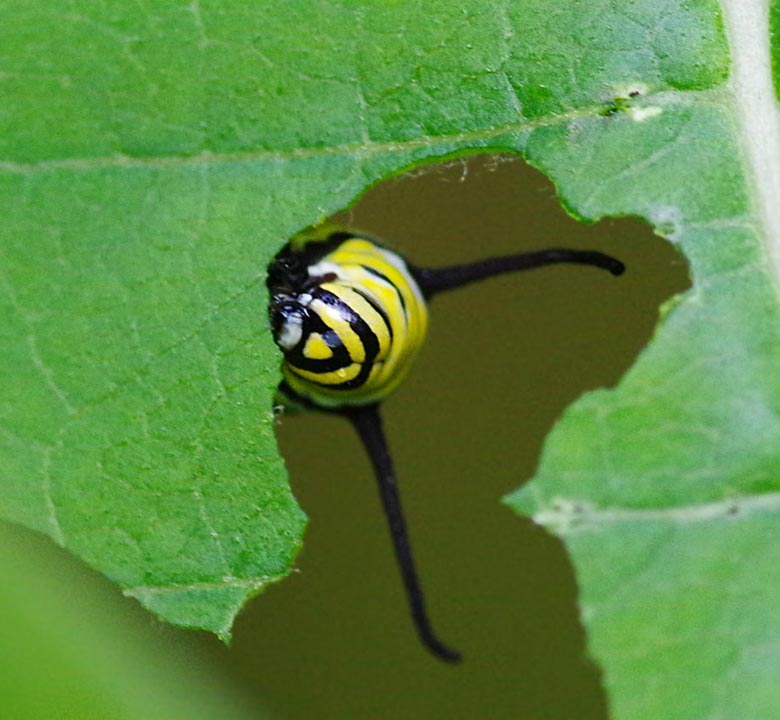
|
Raising Monarchs, 2019 Caterpillars | March 15, 2020 |
| For anyone interested in raising monarchs in the backyard, nothing is more pleasurable than seeing a monarch caterpillar munching away on milkweed. |

|
|
The fun begins once noticing a female monarch engaging in egg laying.
The eggs themselves are quite small, perhaps the size of a fine pencil point. The newly hatched monarch caterpillars are also quite small, but quickly grow. The following is a smaller caterpillar. |
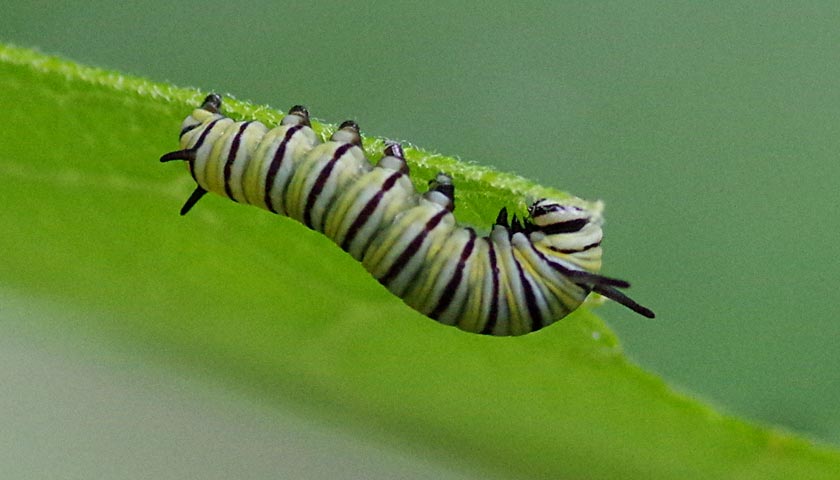
|
|
The monarch caterpillar goes through five stages, called instars. Each new instar is marked by the caterpillar shedding its skin (to allow the caterpillar to increase its size).
It takes approximately 10 days for a monarch caterpillar to proceed from an egg to being ready to form its chrysalis. The question then becomes, if interested in raising monarchs, when do you bring a caterpillar indoors? Different people have different approaches. Some will take an egg indoors. I would wait until just before the "adult" caterpillar is ready to form its chrysalis. Well, I followed the "wait and see" approach until one day when I saw a wasp sting a half-grown caterpillar; that caterpillar drained and died within seconds. Afterward I began taking in younger caterpillars. Of course, while the caterpillars are mostly obvious, they have a tendency not to be seen. And so I experienced any number of surprises when I would come across a large caterpillar when I didn't expect there to be any. Such is the case in the photo below. Those two caterpillars were eating the very last leaf of the swamp milkweed. Where were they beforehand? I don't know, but I took them in immediately. |
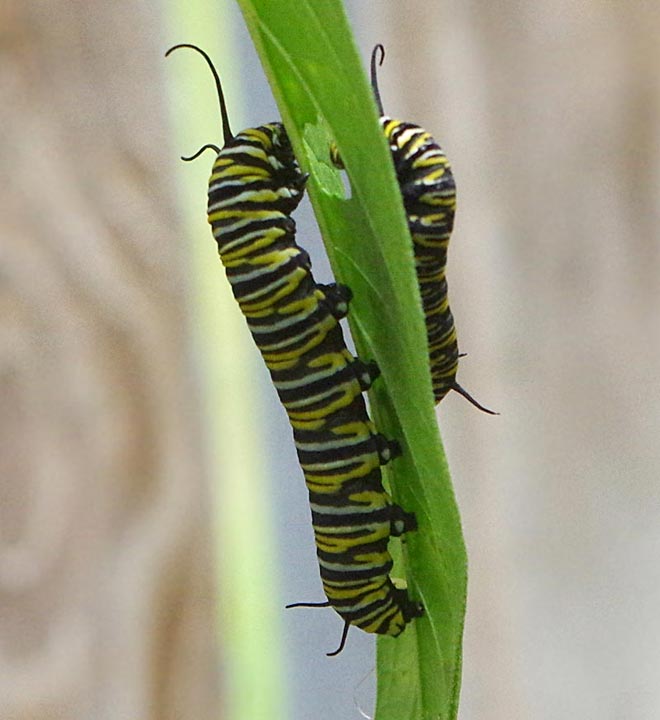
|
| The previous photo was a jump ahead in time; the next is a jump back, to the beginning of August, showing the first two caterpillars Sue and I had brought indoors. |
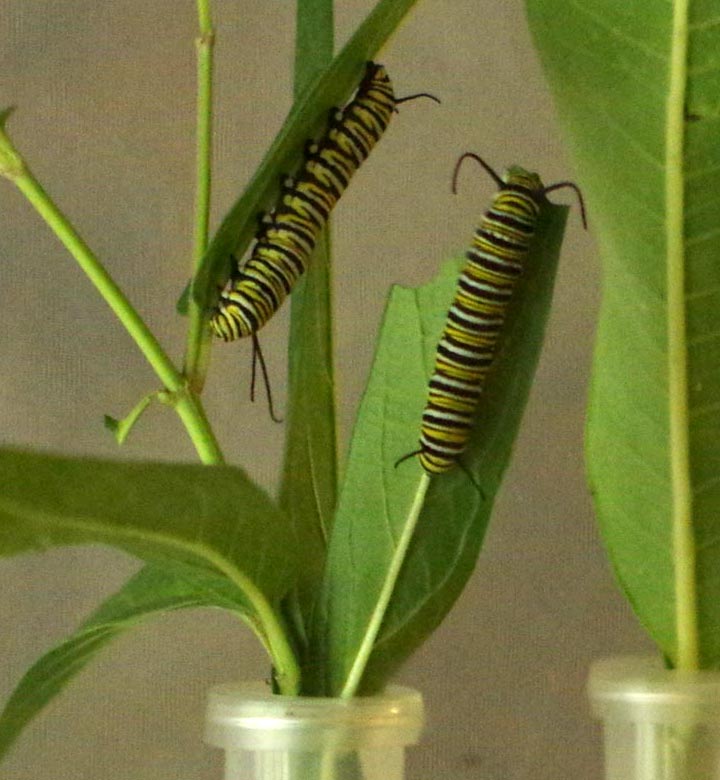
|
| The next photo is an overall view of the same scene and shows our complete caterpillar home. And its advantage is the relative simplicity, enabling me to describe the set up. (Later in the season, it all bcame more complicated, as shown in the first page of this series.) |
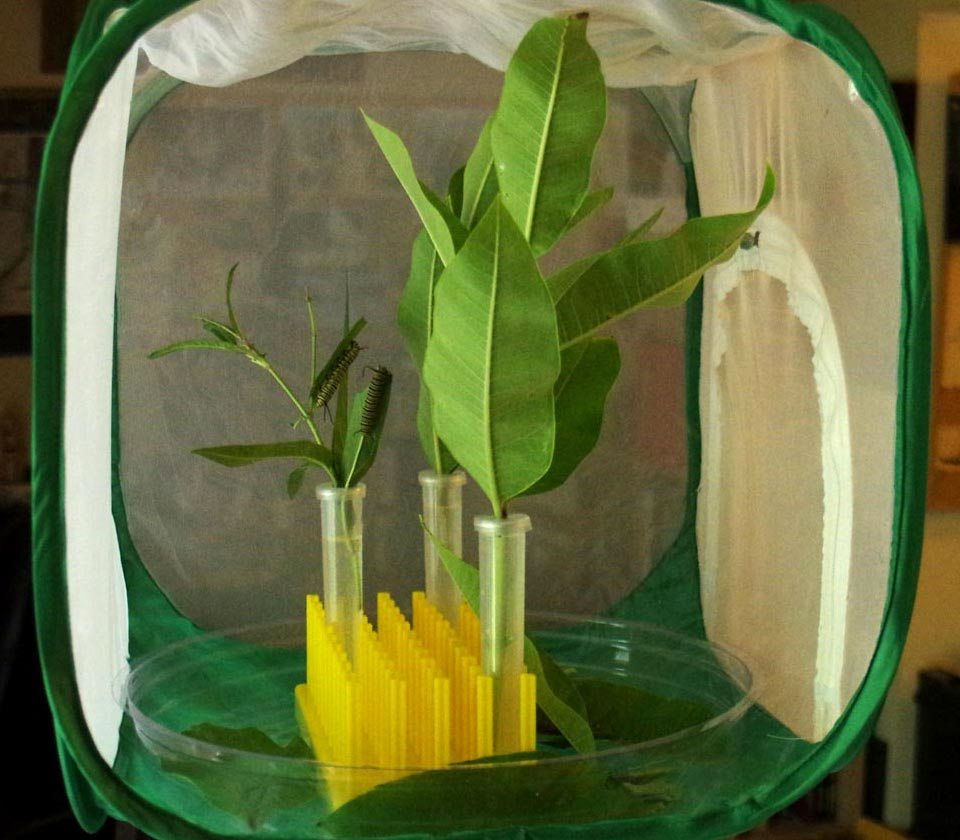
|
|
The monarch home is a small-size cube, consisting of three mesh sides, a clear vinyl side (convenient for observation and photography), a plastic floor (convenient for cleaning), and an all-important zippered door.
On the base is the yellow tube holder, with three tubes full of water in which one inserts sprigs of milkweed for the caterpillars to eat. (Milkweed generally lasts for 2 to 4 days in such a tube; I had to go afield to find milkweed since the guys had enormous appetites.) Also on the floor are a few loose leaves. For taking a caterpillar indoors, I would snip a milkweed leaf off at the stem - with the caterpillar on the leaf - and bring it into the cube. The caterpillar would linger somewhat over its leaf and then climb up and into a sprig of milkweed. Note: Cutting milkweed means it will drip its white sap (which you don't want in your eyes or anywhere else), so it pays to be careful and quick about transporting a caterpillar on its leaf. The caterpillars tend to poop a lot, and every day Sue and I would clean the home. Having doubles or triples of everything (thought unnecessary at first) proved very useful. Everything would be taken out, placed in clean if temporary facilities, cleaned, and then restored. Afterward the home would be placed on its hook by the glass doors. I bought my supplies from the Monarch Butterfly Shop and/or Monarch Butterfly Garden (and I've no affiliation with either; a search on the web would turn up different sites selling supplies). The latter site also has an amazing amount of detailed information about everything one would want to know about monarchs. The big moment in a caterpillar's life arrives when it is ready to form a chrysalis. |